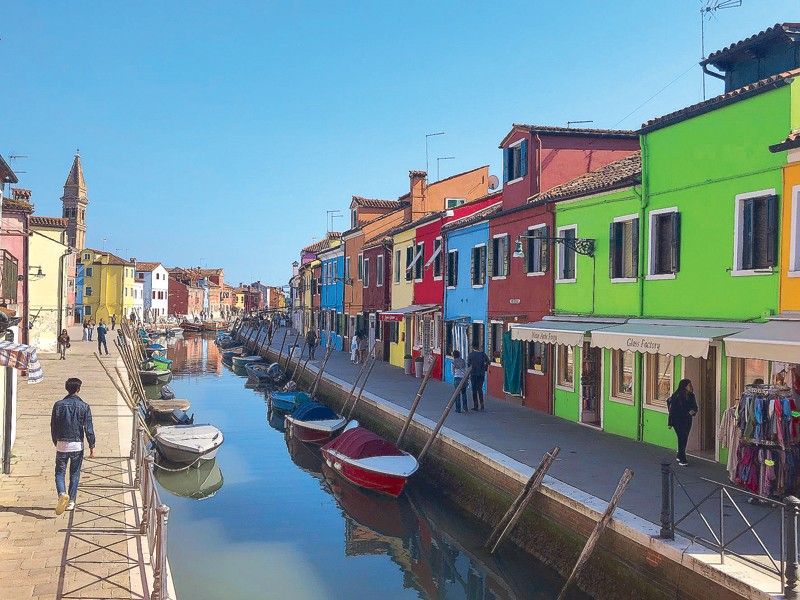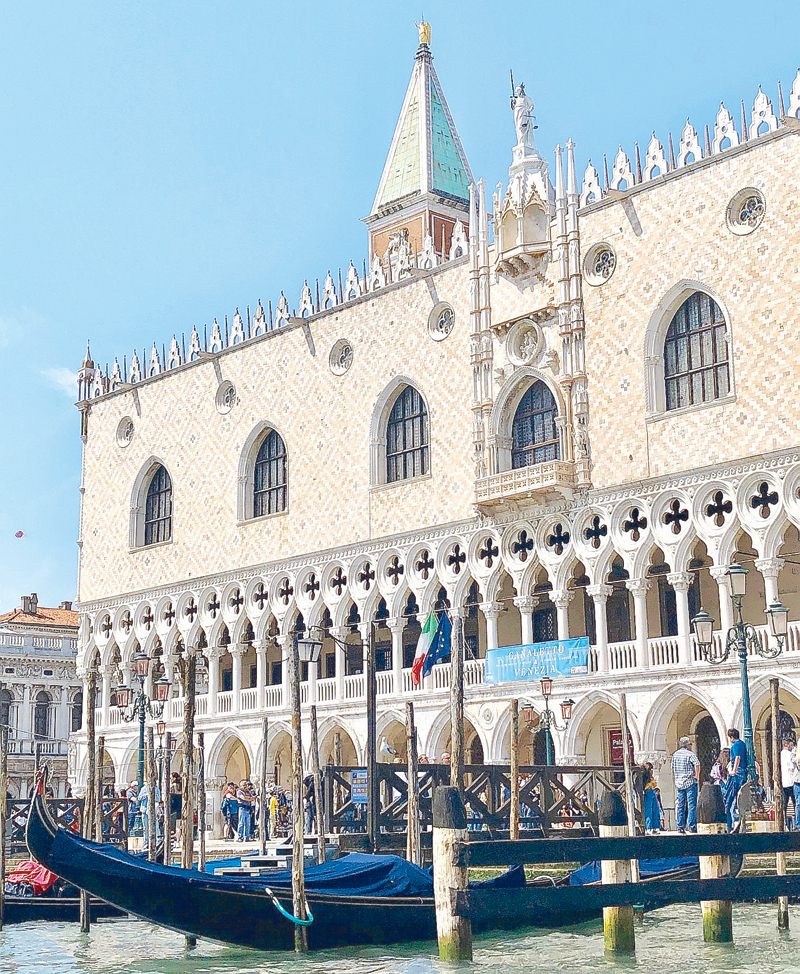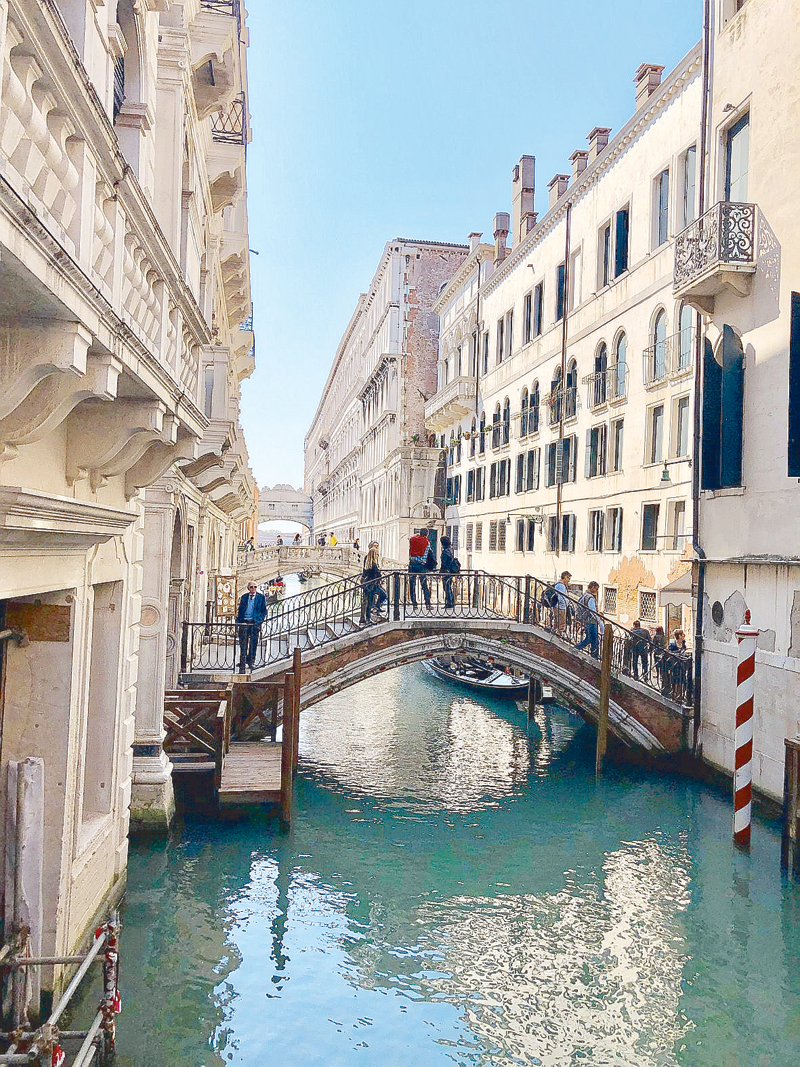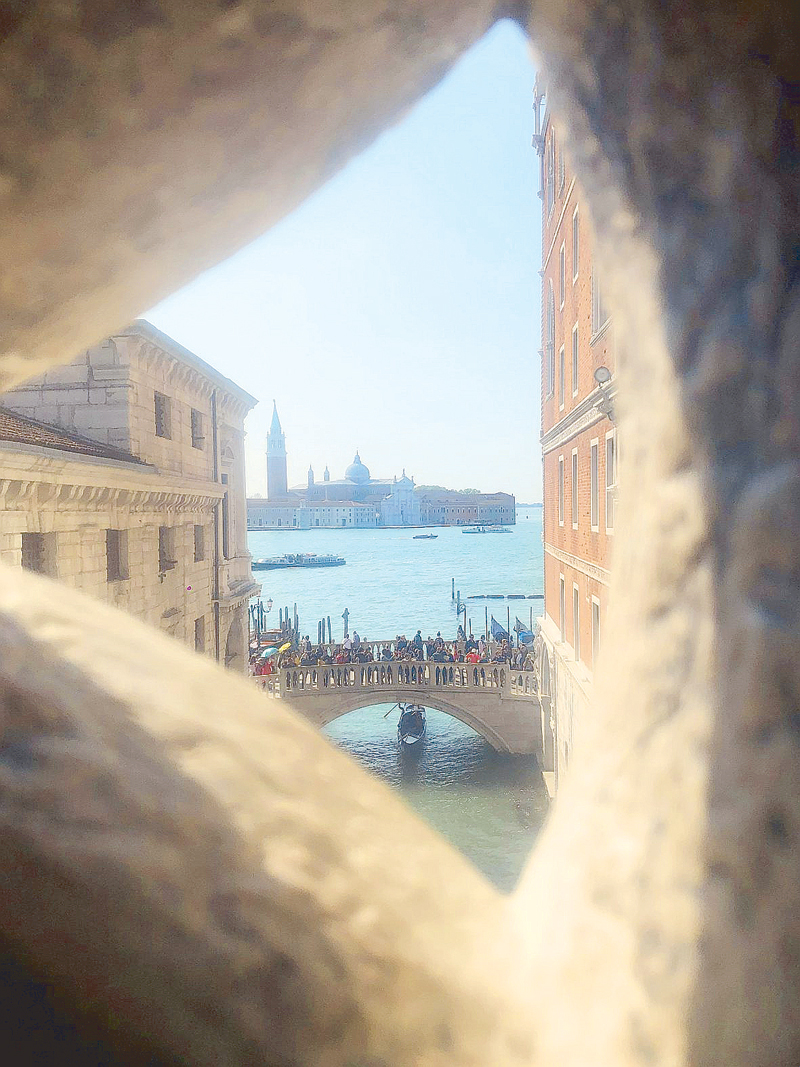Rome & beyond: 117 isles, 391 bridges, 150 canals, one gem

There is no city quite like Venice — it is majesty, history and art afloat on 117 islands (or 118, depends on the tide, I guess!). And though ancient Romanesque and Gothic palaces line these islands, these are threaded by charming arched bridges — 391 bridges, 403, if we include the Giudecca — over 150 canals, including the Grand Canal.
Venice has no roads, just cobblestone alleys that weave through pigeon-filled piazzas, rustic buildings and centuries-old churches. St. Mark’s Basilica, tiled with Byzantine mosaics, defies time at Piazza San Marco, the central square.
In fact, you can also say Venice is a lagoon on the Adriatic Sea dotted by palaces; or you can describe it as palaces dotting a lagoon on the Adriatic Sea. Whichever way you look at it, it is a mesmerizing city that has been romanced by the sea for centuries now.
Venice was part of an eight-day tour of Italy I took with Globus, which allowed me to see as many sights in a limited time at just the right pace (there is always free time within the day to catch one’s breath and some excursions are optional — it’s your choice entirely if you want to go shopping instead.).

The Doge’s Palace.
“Happy memories are built day by day,” says Elena Bertola, our efficient and accommodating tour director, who stayed with us from Day 1 to Day 8, making sure that each tour member felt comfortable, safe and confident enough that, in case of need, “there was always somebody to rely on.” Thank God we had no emergencies or pickpockets, and Elena would often remind us, “A great tour is a safe tour.”
Venice was among the cities in our Globus Italian Vista tour, which began in Rome, followed by Orvieto, Assisi, Florence, Padova, Verona, Venice and Milan, with a side trip to Lake Como. We stayed two nights in Rome, one night in Assisi, two nights in Padova and two nights in Milan — and from these cities we would take day trips to our other destinations.
Our tour was not just all about visiting old churches (which I adored) or museums (which I enjoyed). It also included coffee and pastries in a 100-year-old pasticceria in Orvieto, a homecooked Italian dinner in 14th-century former olive mill in Spello, cocktails and a walk through the piazza in Padova, a seafood dinner in Burano.
* * *
Venice, dating back to the 5th century AD, is unique, and its basilica doesn’t look like most churches in Italy because of its Byzantine architecture, blended with some Islamic design elements. The basic structure of the church dates from around 1060 to 1100, and the gold ground mosaics that now cover almost all the upper areas of the interior took centuries to complete. For its opulent design, gold ground mosaics, and its status as a symbol of Venetian wealth and power, the basilica has been known by the nickname Chiesa d’Oro (Church of gold).
Though this was not my first time in Venice, it was my first time to enter the Doge’s Palace, a masterpiece of Gothic architecture. (A doge was chief magistrate and leader of the then republic of Venice.) Globus got us special access tickets beforehand, hence we did not have to queue to gain entrance to this museum of a palace.

One of the bridges over a Venice canal.
It was while walking through the various salas of the palace, not while crossing the Bridge of Sighs, that I often sighed — in awe. Here, we walked through sala after sala adorned with paintings and frescoes on virtually every column inch of the room — it seemed only the floors were not touched by the paintbrush of a master. The palace housed not only the Doge’s apartments, the seat of the government and the city’s courtrooms, but also a jail, and yes, what is now called the “Bridge of Sighs” because it is said prisoners who walked here on the way to their execution would look out the window and sigh as they viewed the lagoon one last time.
The Chamber of the Great Council is the largest chamber in the Doge’s Palace and also one of the largest rooms in Europe. On one of the long walls behind the Doge’s throne in the chamber is the longest canvas painting in the world, Il Paradiso, which Tintoretto and his workshop produced between 1588 and 1592.
* * *
While some members of the group opted to savor more of Venice, I opted to go to Burano, an island some 40 minutes away from the mainland by vaporetto (water bus). Burano looks like a grade schooler’s painting of brightly colored houses — and yet it is neither a drawing nor a movie set. People actually live and work here!
It is said the fishermen who lived in the village painted their houses in these bright hues of green, red, yellow, even lilac — so they would always be visible from the sea even through the fog. Nowadays, the colors of the houses are said to follow a specific system, and if someone wishes to paint his or her home, he or she must send a request to the government.

View from the ‘Bridge of Sighs’ prison.
While the island of Murano is famed for its glass, Burano is renowned for its lace. In the 16th century, women on the island began making lace with needles, being introduced to such a trade via Venetian-ruled Cyprus.
So, how do I love Venice? Let me count the ways... I mean, the islands.
(For more information, contact your preferred travel agency or visit www.globus.com.ph. You can also contact Globus Philippines general sales agent, Baron Travel Corp. at 817-4926 or 812-0441.)
(You may e-mail me at [email protected]. Follow me on Instagram @joanneraeramirez.)
- Latest
























